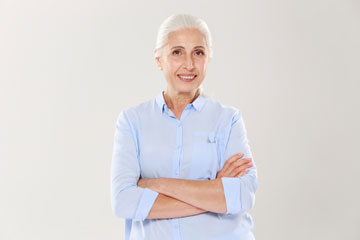
Breast pain (also called mastalgia) is a common condition among women. Breast pain can occur at any age, but it is less common after menopause than before menopause. In most cases, pain in the breasts is not a sign of breast cancer or other serious conditions, especially when it is the only symptom. The pain is usually categorized as either cyclical or noncyclical. Cyclical pain refers to the pain associated with your menstrual cycle, whereas non-cyclical pain can occur due to injuries to the breasts or surrounding muscles or tissues. Pain can vary in intensity from a sharp pain to a mild tingling. In some cases, women may experience breast tenderness, or their breasts may feel fuller than usual. A number of factors can contribute to breast pain in older women –
- Hormonal Fluctuations – Tender or swollen breasts are usually related to hormonal imbalances (fluctuations in estrogen and progesterone) that take place before a period. This type of breast pain usually causes tenderness in both the breasts, and it may extend to the armpit. The pain in the breasts may get worse as you get older due to increased sensitivity to hormones.
- Usage of Certain Medications – Breast pain can at times occur as a side effect of certain medications such as cardiovascular drugs, drugs to treat anemia, diuretics, psychiatric drugs and hormone therapy.
- Large Breasts and Support Problems – Large, heavy breasts can stretch ligaments and tissues, which causes breast pain and tenderness. In fact, this can also cause pain in the shoulders, back, and neck and this pain tends to get worse when you are physically active. In addition, bras that are too tight that dig into the skin or breast tissue and do not provide enough support can also cause or aggravate these symptoms. Supportive bras can help when exercising.
- Trauma – Any specific injury to the breasts can cause temporary pain, tenderness, and swelling. It can be the result of a blow to your breast during physical activity or due to an accident.
- Benign Breast Conditions – Cysts, fibrocystic changes, and other benign breast conditions can happen at any age, but are more likely to occur before menopause than after menopause. These changes can cause tenderness, lumps or cysts, sensitive nipples, itchiness and cause the breasts to feel firmer or thicker than usual. These symptoms may get worse before a period and usually stop after menopause.
- Mastitis – Mastitis is the term for inflammation or swelling in the breasts. The usual cause is an infection that can happen at any age, but it is more common before menopause. The pain is only in the infected breast. Other signs of infection include swelling, pain and warmth in parts of the breast, redness, fever, headache, discharge and general flu-like symptoms.
- Problems with Breast Implants – Breast pain can also occur among women who got breast implants or underwent breast augmentation years ago. Breast pain can be a sign that scar tissue has formed too tightly around the implants, a condition called capsular contracture).
- Breast Cancer – The risk for breast cancer increases with age, and most cases are diagnosed after age 50. Breast cancer occurs when cells in the breast mutate and begin growing uncontrollably. Pain in the breast is not usually due to cancer, but this is a possible cause. Other symptoms may include a lump/pain in the breast, nipple discharge, dimpling or irritation of breast skin, and thickening or swelling of part of the breast.
There are multiple possible causes of breast pain, or mastalgia. Breast pain is less common after menopause. Most of the time, the cause is benign and breast pain resolves without treatment. There are also a few home remedies that can help relieve the pain.
